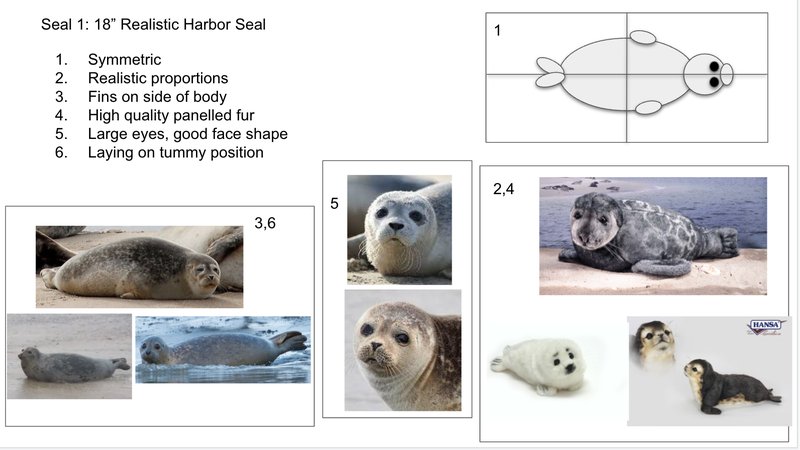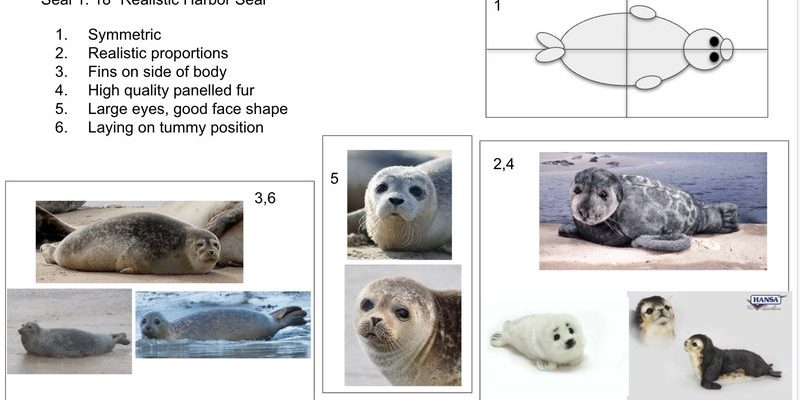
So, why should you care about the evolution of the harbor seal? Well, understanding these creatures helps us grasp the bigger picture of marine ecosystems and the importance of biodiversity. By exploring their origins, adaptations, and climatic challenges, we gain insight into how species evolve and survive in the face of adversity. Plus, it’s pretty cool to think about how these slick swimmers have transformed through the ages!
Where It All Began: The Origins of Pinnipeds
To truly appreciate the harbor seal, we need to rewind the clock to over 20 million years ago. During this time, the pinniped family, which includes seals, sea lions, and walruses, began to evolve. These fascinating creatures are thought to have descended from land-dwelling ancestors. Imagine a furry, dog-like animal that eventually took to the seas—kind of like that one friend who loves the beach so much they practically live there!
These early pinnipeds had to adapt to their new aquatic lifestyles. This meant developing streamlined bodies, flippers instead of paws, and specialized breathing techniques. The need to hunt for food underwater led to changes in their teeth and jaw structure, allowing them to catch and consume fish more effectively. It’s as if evolution gave them a built-in toolkit for survival.
The Rise of the Harbor Seal
Fast forward to about 5 to 10 million years ago, and we see the emergence of the harbor seal as a distinct species. Found primarily in the coastal waters of the North Atlantic and North Pacific, these seals adapted to a variety of environments, from open ocean to sheltered bays. Think of them as the chameleons of the marine world, blending in with their surroundings while skillfully navigating their habitat.
Harbor seals have developed unique physiological traits suited for their life at sea. Their thick layer of blubber keeps them warm in cold waters, and their sleek fur helps them glide effortlessly through the waves. Interestingly, they can also dive to impressive depths—some even reach over 600 feet—to hunt for their primary prey, which includes fish and crustaceans. Imagine diving down into the depths of the ocean, searching for your next meal; that’s a day in the life of a harbor seal!
Adaptations That Matter: Physical Features
Harbor seals are equipped with several intriguing physical adaptations that allow them to thrive in their environment. For starters, their blubber serves multiple purposes. Besides providing insulation, it acts as an energy reserve during times when food is scarce. This is especially important given the fluctuations in prey availability caused by changing ocean conditions.
Their eyes are another remarkable feature. Designed for underwater vision, harbor seals can see well in both bright and dim light, making them effective hunters. Plus, they possess a keen sense of hearing, which helps them detect the faintest sounds of prey. Honestly, navigating the underwater world without these incredible adaptations would be a tough challenge for them—like trying to find your way in a new city without your smartphone!
Social Structures and Behavior
Harbor seals are quite social creatures, often seen lounging together on rocks or sandy beaches. Their social structures can vary, with some populations displaying more communal behavior than others. You might be wondering how they communicate with one another, right? Well, harbor seals make a range of vocalizations, from barks to grunts, which helps them maintain social bonds and establish territory.
When it comes to breeding, harbor seals typically mate from late winter to early summer. Females give birth to a single pup, which they nurse for several weeks. During this time, mothers are fiercely protective, often keeping their pups hidden from potential predators, much like how a protective parent keeps a watchful eye on their children in a busy park.
Environmental Challenges and Conservation Efforts
Unfortunately, harbor seals face numerous environmental challenges today. Climate change, pollution, and habitat destruction all threaten their populations. Changing ocean temperatures can affect the availability of their prey, while pollution can degrade their habitat. You might wonder, “What’s being done to help these seals?” Well, there are various conservation efforts underway aimed at protecting their habitats and ensuring a stable food supply.
Organizations have been working to restore coastal ecosystems and implement protective measures against pollution. Educating the public about the importance of marine conservation is crucial, too. After all, when you understand the impact of your actions on these animals, you’re more likely to take steps to protect them.
Harbor Seals in Culture and Research
Beyond their physical traits, harbor seals also hold cultural significance in many coastal communities. They are often featured in local folklore and are a beloved sight for wildlife enthusiasts. Their playful nature and endearing looks make them a popular subject for photographers and nature lovers.
Research on harbor seals continues to enhance our understanding of marine ecosystems. Studying their behaviors and habitats helps scientists gauge the health of the ocean. In many ways, harbor seals are like the canaries in the coal mine for ocean health; their well-being can indicate larger environmental issues that affect numerous species. Isn’t it fascinating how much we can learn from these remarkable creatures?
The Future of Harbor Seals
As we look to the future, the survival of harbor seals depends largely on our collective actions toward marine conservation. Protecting their environments and ensuring that they have access to clean, sustainable food sources is essential. Just think of it like taking care of our own backyard; when we respect nature, we pave the way for future generations of wildlife, including harbor seals, to thrive.
In conclusion, the evolutionary journey of the harbor seal is a story of resilience and adaptation. From their ancient ancestors to the sleek, agile animals they are today, harbor seals remind us of the beauty of biodiversity. By learning about their history and the challenges they face, we can become better stewards of the marine world. After all, wouldn’t it be great to see these playful creatures continue to thrive for years to come?

